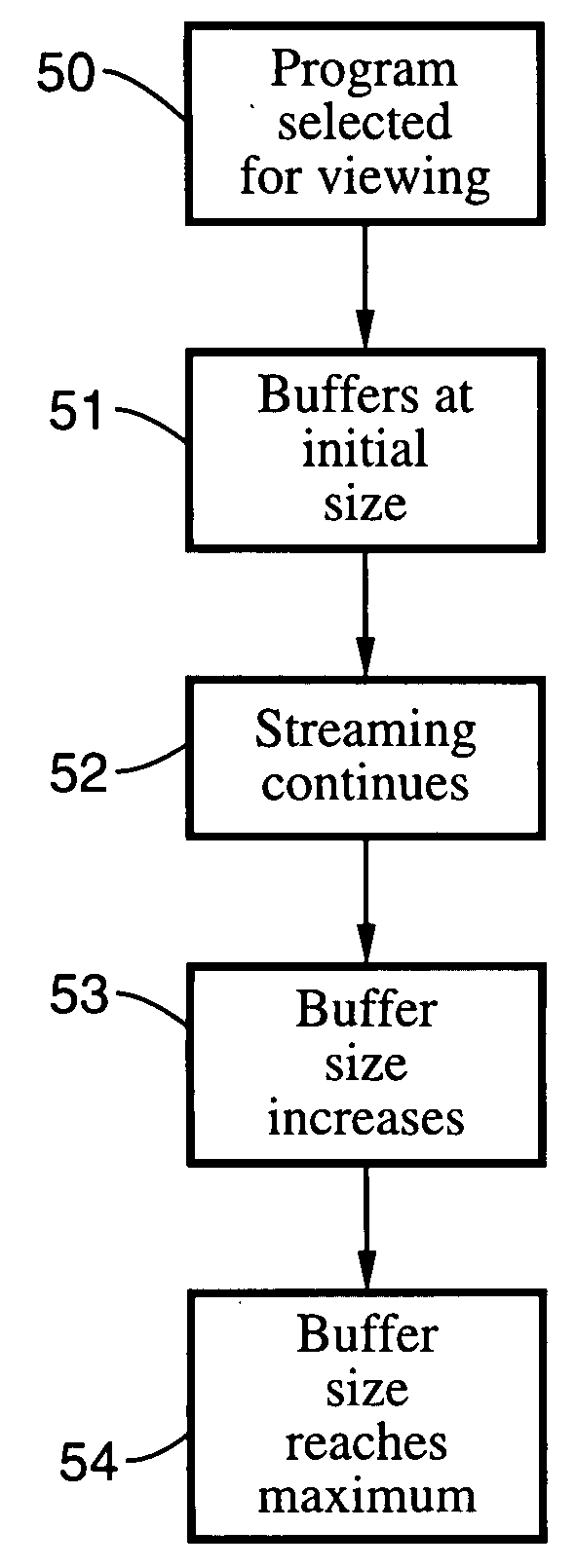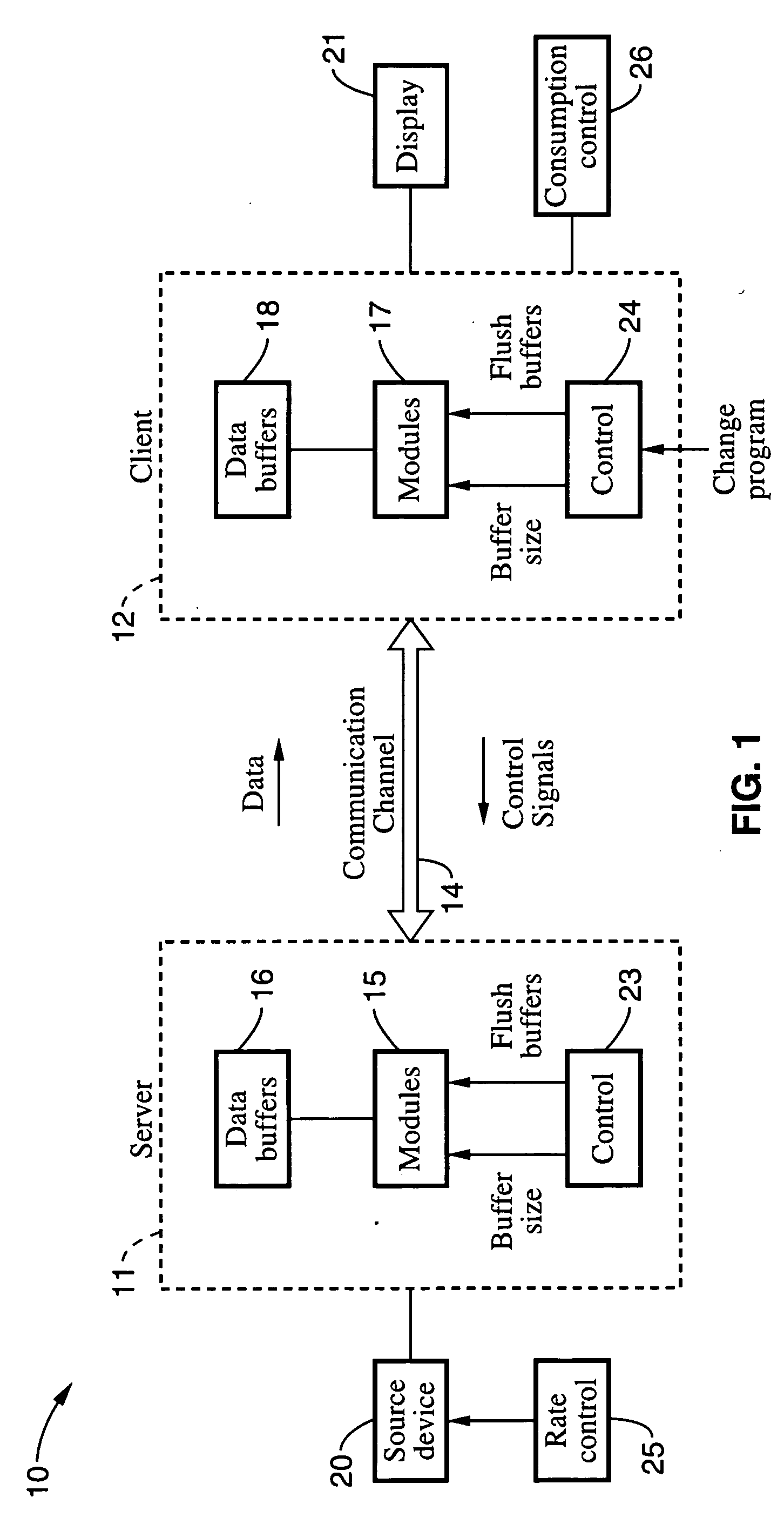Methods and apparatus for decreasing streaming latencies for IPTV
a technology of internet protocol television and latencies, applied in the field of a/v streaming systems, can solve the problems of introducing a latency into the streaming system, degrading the user's experience, artifacts and other defects in the displayed video, etc., and achieve the effect of reducing latency
- Summary
- Abstract
- Description
- Claims
- Application Information
AI Technical Summary
Benefits of technology
Problems solved by technology
Method used
Image
Examples
Embodiment Construction
[0035] Referring more specifically to the drawings, for illustrative purposes the present invention is embodied in the methods and apparatus generally shown in FIG. 1 through FIG. 10. It will be appreciated that the apparatus may vary as to configuration and as to details of the parts, and that the methods may vary as to the specific steps and sequence, without departing from the basic concepts as disclosed herein.
[0036] The invention applies to a server-client A / V (audio-video or audio-visual) streaming system, such as a system where the client is located in a home environment. The server streams video that is read from a source and this A / V data is transmitted to a remote client system over a wired or wireless communication link. The communication link introduces packet jitter and burstiness into the system, which cause artifacts and other defects in the displayed video. Data buffers are included at both the Tx and Rx (and also at intermediate nodes) to reduce the effects of this...
PUM
 Login to View More
Login to View More Abstract
Description
Claims
Application Information
 Login to View More
Login to View More - R&D
- Intellectual Property
- Life Sciences
- Materials
- Tech Scout
- Unparalleled Data Quality
- Higher Quality Content
- 60% Fewer Hallucinations
Browse by: Latest US Patents, China's latest patents, Technical Efficacy Thesaurus, Application Domain, Technology Topic, Popular Technical Reports.
© 2025 PatSnap. All rights reserved.Legal|Privacy policy|Modern Slavery Act Transparency Statement|Sitemap|About US| Contact US: help@patsnap.com



